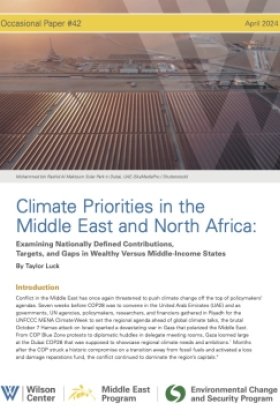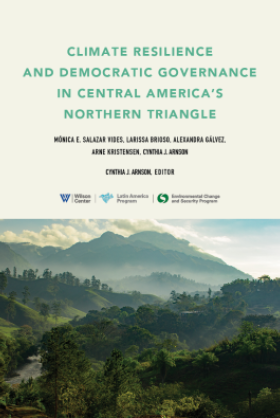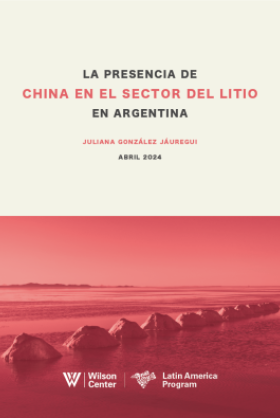Women and Water: Streams of Development
Women and water are inextricably linked around the world. Responsibility for fetching and using water commonly rests – quite literally – on the shoulders of women and girls. This burden exacts a high toll across sectors, negatively impacting health, education, economy, agriculture, gender equity, and political stability.
Overview
“One of the things that we consistently learn is that water is a woman’s issue,” said Lisa Schechtman,WaterAid America’s head of policy and advocacy, leading off a September 23 Wilson Center on the Hill panel on gender, water and development. Schechtman was joined in the discussion by Jae So, director of the World Bank’s Water and Sanitation Program; Christian Holmes, USAID’s Global Water Coordinator; and Geoff Dabelko, moderator and director the Wilson Center’s Environmental Change and Security Program.
Water issues affect everyone, but women often bear the brunt of water collection responsibilities, making them vulnerable to changes in access or sanitation, especially in developing countries. “Studies show that about 26 percent of a rural African woman’s time is spent collecting water,” Schechtman said. “That means that they can’t go to school, they can’t take care of their families, or go to clinics, or spend time generating income, or doing other things in their community like participating in political processes.”
What’s more, as women make the hours-long hike to get water, “they’re risking injury and sexual assault,” Schechtman added. “So there’s a really wide-ranging set of impacts, just out of the actual act of collecting water.”
The Horn of Africa: Severe Problems, Small Changes
In one town in northeastern Kenya, Holmes said women have to travel 12 miles to find water – and even then, they are drawing it from a waterhole shared with wildlife. In Ethiopia, “we have severe problems,” he said, “not the least of which is not just sanitation but also HIV and AIDS,” as HIV/AIDS patients often drink unsanitary water to take their medications. That water gives them diarrheal disease, “so they’re excreting the value of the treatment” – and women, as household caregivers, bear an ever greater burden.
In Somalia, girls drop out of school once they start menstruating because schools do not have latrines that allow them to meet their needs safely and privately. “To think that the lack of a latrine could make you drop out of school and your entire life is going to change overnight – it’s just not acceptable,” said Holmes.
In each of these cases, small changes could dramatically reduce strains on women. Holmes pointed to a USAID project in Kenya that is building wells closer to population centers and empowering women by bringing them into the decisions on developing and managing wells. In Ethiopia, NGOs are working to train women on sanitation and hygiene, which could reduce the burden of illness on women and their families. And in Somalia, the simple addition of women’s latrines at schools would mean girls can continue their education beyond puberty.
Closing the Water Gender Gap
The World Bank’s 2012 World Development Report on Gender Equality and Development recommends that development professionals “look at the gender gaps in basic endowments, like access to health, access to water resources, access to land,” and determine not just how they affect men and women differently but why those gaps exist in the first place, said Jae So.
A CARE and Swiss Development Corporation study of water services in Nicaragua found that when men realized how much of a role water-related activities played in women’s day-to-day lives, “it energized the entire community to really devote their collective resources” towards improving water management, said So.
“Water touches everything else in one’s life,” said Holmes. “You can link it to water and climate change, water and health, water and food, water and conflict, water and education – all are interwoven.”
Drafted by Kate Diamond and edited by Schuyler Null and Meaghan Parker
Speakers

Geoffrey D. Dabelko, PhD
Professor and Associate Dean, George V. Voinovich School of Leadership and Public Affairs, Ohio University; Associate Senior Fellow, Environment of Peace Initiative, Stockholm International Peace Research Institute
Christian Holmes
Lisa Schechtman
Jae So
Hosted By

Environmental Change and Security Program
The Environmental Change and Security Program (ECSP) explores the connections between environmental change, health, and population dynamics and their links to conflict, human insecurity, and foreign policy. Read more
Thank you for your interest in this event. Please send any feedback or questions to our Events staff.








